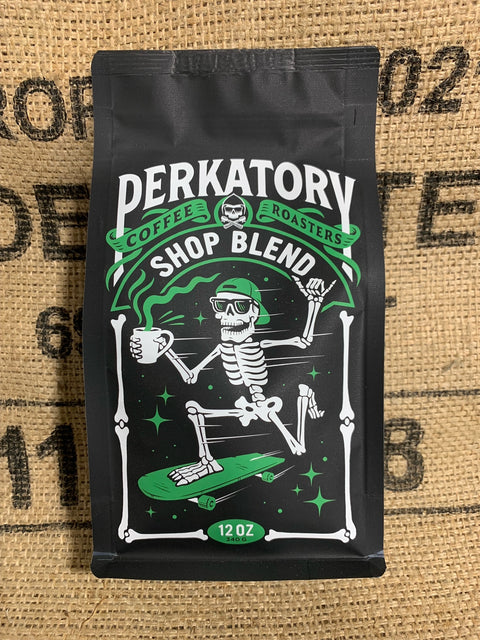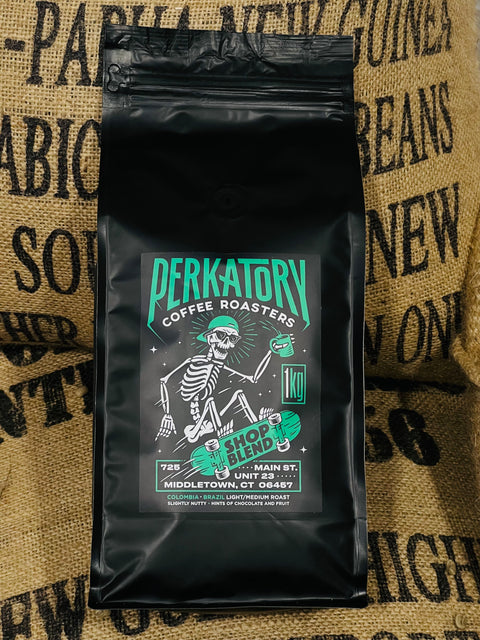Are you a coffee lover looking to elevate your brewing game? This blog post will share seven expert tips on bringing out the best in your coffee beans. From choosing the right beans to experimenting with different brewing methods, we've got you covered. Get ready to unlock new levels of flavor and aroma in every cup!
1. Understanding Varieties of Coffee Beans
Both the Arabica and Robusta are the two main coffee bean varieties. Arabica beans have a delicate flavor profile with notes of fruit and acidity, while Robusta beans have a more pungent and more bitter taste with higher caffeine content. Understanding the differences between these can help you choose which beans are suitable for your desired coffee experience.
2. Choosing the Right Coffee Beans
When it comes to choosing the right coffee beans, opt for high-quality arabica beans. These beans are known for their rich flavors and distinct aroma, ensuring a unique and enjoyable brew. Pay attention to the roast level as well, as different levels can significantly affect the taste profile of your coffee.
Understanding the Different Roast Levels
Light roast: Highlights the original flavors of the arabica bean with delicate acidity and floral notes.Medium roast: Strikes a balance between flavor development and acidity, resulting in a well-rounded cup with hints of caramel and chocolate.
Dark roast: Intense flavors emerge as oils from within the bean are brought to the surface, offering bold richness and smoky undertones.
Matching Roast Level to Coffee Flavor Profiles
- Light roasts complement bright and fruity coffee profiles, enhancing their natural sweetness.
- Medium roasts pair well with nutty or chocolatey flavor profiles, adding depth without overpowering subtle nuances.
- Dark roasts intensify earthy or bittersweet flavor profiles, creating robust cups that linger on the palate.
Experimenting with Light, Medium, and Dark Roasts
Try different roast levels to discover your preferred taste spectrum - crisp brightness in light roasts or deep complexity in dark ones. Feel free to explore new dimensions of flavor by experimenting with various beans and their respective roast levels.
3. Proper Storage of Coffee Beans
Proper storage is important in preserving the freshness and flavor of coffee beans. To prevent degradation, avoid exposing these to light and moisture. Losing natural oils and flavors of beans is because of light, while water can lead to mold growth. Store these in an airtight container in a cool, dark pantry or cupboard away from direct sunlight and humidity.
Additionally, consider using opaque containers that block out light completely. This will further protect the integrity of your coffee beans by preventing any potential damage caused by exposure to light.
Furthermore, ensure that the container you choose has a tight seal to prevent any air or moisture from entering, which can compromise the quality of your brews over time.
Remember: Properly storing coffee beans is crucial in maintaining the optimal flavor profile of your beloved coffee beans!
Avoiding exposure to light and moisture
Preserving the freshness and flavor of coffee is crucial to avoid exposing them to light and moisture. Light can degrade the quality of the beans by causing oxidation and loss of aroma. Water, on the other hand, can lead to mold growth and spoilage. For optimal results, you can store your beans in an opaque, airtight container in a dry place, away from direct sunlight or humidity.
Seal your container tightly after each use to prevent air from entering and compromising the flavors. By taking these simple precautions, you can make sure that your coffee beans retain their exceptional taste and aromatic properties for longer periods, allowing you to enjoy exquisite brews with every cup.
4. Grinding Coffee Beans
Using a burr grinder is essential for achieving a consistent grind size. This grinder ensures that the coffee beans are evenly ground, resulting in a more flavorful and aromatic brew.
Adjusting the grind size according to your brewing method is crucial. A finer grind works best for espresso machines, while medium-coarse is ideal for pour-over ways like Chemex or V60. Experimenting with the different settings to find the perfect balance between extraction and flavor.
Using a Burr Grinder
A burr grinder is essential for achieving the best flavor from your coffee beans. Here are some tips to help you get the most out of your grinder:
- Invest in a high-quality burr grinder for consistent grind size.
- Adjust the grind size based on your brewing method.
- Start with a coarse grind for the French press and gradually decrease it for pour-over or espresso.
- Clean your grinder regularly to prevent stale flavors.
Just follow these steps, and you will ensure you can extract the maximum flavor from your coffee bean for a delightful cup of coffee.
Adjusting grind size for different brewing methods
Adjusting the grind size is essential for optimizing the flavor and extraction of your coffee beans. Here are some key points to keep in mind when adjusting grind size for different brewing methods:
- For espresso, use a fine grind to ensure proper extraction and create a rich, concentrated shot.
- French press requires a coarse grind to prevent over-extraction and produce a full-bodied brew.
- Drip coffee calls for a medium grind that allows water to pass through steadily, resulting in a well-balanced cup.
- Aeropress benefits from using a slightly finer than medium grind, enhancing flavor clarity.
By understanding how different brewing methods interact with varying grinds, you can unlock the true potential of your coffee beans. Experimentation is vital to finding the perfect balance between extraction time and flavor profiles.
5. Water Quality and Temperature
Using filtered water
The quality of the water you use can greatly impact the taste of your coffee. Filtered water helps remove impurities and undesirable flavors, allowing the true essence of your coffee beans to shine through.
Finding the optimal brewing temperature
Temperature plays a vital role in extracting the best flavors from your coffee beans. Aim for a brewing temperature between 195-205°F (90-96°C) to achieve balanced, well-rounded brews that highlight acidity and sweetness in your cup.
Using filtered water
Filtered water is essential for extracting the best flavor from your coffee beans. Tap water often contains impurities and minerals that can badly affect the taste of your brew. Using filtered water ensures that only clean and pure water comes into contact with the beans, allowing their natural flavors to shine through.
Filtered water not only improves the taste of your coffee but also helps maintain the longevity of your brewing equipment. Removing impurities prevents any buildup or clogging in your machine, extending its lifespan and reducing maintenance needs. Invest in a reliable filtration system to enhance both the quality of your brews and the longevity of your equipment.
Finding the optimal brewing temperature
To achieve the perfect cup of coffee, finding the optimal brewing temperature is crucial. Here are some tips to help you find that sweet spot:
- Experiment with different temperatures
- Try brewing your coffee at various temperatures and take note of the flavors and aromas that come through.
- Use a thermometer
- Use a good quality thermometer to ensure accuracy when measuring water temperature.
- Start with 195°F (90°C)
- This is a good starting point for most coffees. Adjust up or down as needed.
- Cooler water for lighter roasts
- Lighter roasted beans benefit from slightly lower brewing temperatures, around 185°F (85°C).
- Hotter water for darker roasts
- Darker roasted beans can handle higher brewing temperatures, so use water around 205°F (96°C).
- Steady heat distribution
- Maintain a consistent temperature throughout the entire brew process by preheating your equipment before use.
Finding the optimal brewing temperature allows you to unlock the full potential of your beans, enhancing their unique flavors and creating an exceptional brew.
6. Ratio and Timing
Determining the coffee-to-water ratio
The perfect balance of coffee and water is crucial for extracting maximum flavor from your beans. Start with a general guideline of 1:16, adjusting as needed based on personal taste preferences and bean quality.
Understanding brewing time
The duration of brewing has a significant impact on the taste profile of your coffee. Experiment with different brew times to find the ideal extraction point that brings out the desired flavors, whether it's a shorter brew for brighter notes or a longer brew for rich and robust flavors.
Experimenting with Brewing Methods
Trying pour-over or French press
Experimenting with different brewing methods like pour-over or French press can bring out unique and nuanced flavors in your coffee beans. This pour-over method allows for a clean and bright cup, while the French press delivers a rich and full-bodied brew.
Exploring cold brew or espresso
For a refreshing change, try brewing the beans using the cold brew method. This slow extraction process yields a smoother, less acidic taste perfect for hot summer days. Alternatively, if you're looking to savor intense and concentrated flavors, consider experimenting with an espresso machine to create bold shots of espresso from your favorite coffee beans.
Trying pour-over or French press
Using a gooseneck kettle allows for precise pouring, ensuring an even extraction of flavors from the coffee grounds. Adjusting the grind size can control the extraction rate, resulting in different flavor profiles and strengths. Experimenting with water temperature can bring out unique nuances in taste, allowing you to find your preferred brewing method.
Exploring cold brew or espresso
Choosing the right coffee-to-water ratio for cold brew is crucial in achieving a well-balanced and flavorful result. Start with a 1:4 coffee-to-water ratio, then adjust according to your taste preference.
Understanding the importance of pre-infusion in espresso brewing can greatly enhance the quality of your shot. Pre-infusion allows for even extraction by saturating the grounds before applying pressure, resulting in a smoother and more nuanced flavor.
Testing different roast levels for optimal espresso flavor can provide exciting variations in taste profiles. Experiment with light, medium, and dark roasts to get the perfect balance between acidity, sweetness, and bitterness that suits your palate.
7. Freshness and Quality
Opting for freshly roasted beans is crucial in enhancing the flavor of your coffee. Freshly roasted beans retain their natural oils and flavors, resulting in a more aromatic and vibrant brew. Look for roasters who prioritize freshness, ensuring you receive the best coffee beans.
When evaluating bean quality, pay attention to factors such as origin, altitude, varietal, and processing methods. These elements greatly influence the taste profile of your coffee. Choose high-quality beans with distinct characteristics to ensure a memorable and enjoyable brewing experience.
Opting for Freshly Roasted Beans
Roasting levels significantly impact the flavor profile of coffee beans. Light roasts preserve the natural flavors and acidity, while dark roasts develop bold and smoky notes. Store your coffee beans properly to maintain their freshness and aroma. Airtight containers in a cool, dark place are ideal for extending shelf life. After roasting, allow the beans to degas for optimal brewing by leaving them in an open container for 12-24 hours before sealing.
- Light roasts: Preserve natural flavors and acidity
- Dark roasts: Develop bold and smoky notes
- Proper storage: Airtight containers in a cool, dark place
- Degassing after roasting: Leave beans open for 12-24 hours before sealing
Evaluating Bean Quality
Understanding the origin and processing methods of coffee beans is essential in evaluating their quality. Each region and processing technique imparts unique characteristics to the beans, affecting their flavor profile and overall quality. By familiarizing yourself with these factors, you can better appreciate the nuances and make informed choices when selecting your brew.
Identifying flavor profiles in different coffee varieties is another key aspect of evaluating bean quality. Whether it's a fruity Ethiopian Yirgacheffe or a rich Colombian Supremo, each type offers distinct flavors that enhance your coffee experience. Developing this skill allows you to explore new tastes and find your preferred palate.
Recognizing signs of freshness and quality is crucial for ensuring an enjoyable cup of coffee. Look for beans that have been recently roasted, as they retain more aromatic compounds that contribute to robust flavors. Also, examine the appearance of the beans – they should be uniform in size, without any visible defects like cracks or insect damage.
By understanding origin and processing methods, identifying flavor profiles in different varieties, and recognizing signs of freshness and quality, you will be able to elevate your coffee brewing game by choosing top-notch beans that promise exceptional flavors in every sip.
Frequently Asked Questions
How long do coffee beans stay fresh?
Coffee beans typically stay fresh for about 2-4 weeks after they have been roasted. It depends on various factors, such as the type of bean, its origin, and how it is stored.
Coffee beans, like any other food product, have a shelf life. Once roasted, coffee beans start to go through a process called oxidation, which gradually degrades the flavor and aroma of the coffee. This process is accelerated when the beans are exposed to air, light, moisture, and heat.
Ensure the freshness of your coffee beans by storing them properly.
Please take note that one of the great ways to store your coffee beans is to put them in an airtight container, away from light and moisture. It is also advisable to store them at room temperature, as extreme temperatures can negatively impact the flavor and quality of the beans.
If you are planning to buy your coffee beans in bulk, it is recommended to part them into smaller portions and store them in separate airtight containers. This will help minimize the beans' exposure to air each time you open the container, thus prolonging their freshness.
Where can I buy quality coffee beans?
If you're a coffee enthusiast seeking to elevate your brewing experience, the foundation lies in the quality of the coffee beans you use. While there are numerous places to purchase coffee beans, finding a reliable source that offers exceptional quality can take time and effort. However, fear not, as I have compiled a list of reputable options where you can buy top-notch coffee beans.
- Specialty Coffee Roasters
Specialty coffee roasters are dedicated to sourcing and roasting high-quality coffee beans. These establishments pride themselves on their expertise and often have direct relationships with coffee farmers. They carefully curate their selection to offer unique and flavorful beans. You can check out Perkatory Roasters and see their high-quality coffee beans available in both retail and wholesale.
- Farmers Markets
The farmers markets are an excellent place to find fresh and locally sourced coffee beans. You can directly interact with local farmers, learn about their cultivation methods, and even sample their offerings. This direct connection ensures transparency and supports sustainable and ethical practices.
- Online Coffee Retailers
In the digital age, the convenience of online shopping must be noticed. Several reputable online retailers specialize in offering a huge range of coffee beans from various regions worldwide. These retailers often provide detailed descriptions of each bean's flavor profile, cultivation process, and even customer reviews to give you ideas and help you make an informed decision.
What health benefits coffee beans can give?
Coffee beans offer a plethora of health benefits that go beyond simply providing a morning pick-me-up. These are also packed with antioxidants, vitamins, and minerals. These little powerhouses can contribute to overall well-being in several ways. Here are some of the key health benefits of coffee beans:
1. Rich in antioxidants
Coffee beans are a rich source of antioxidants, which help combat free radicals in the body.
2. Boosts cognitive function
The caffeine content in coffee beans has been shown to enhance cognitive function, including improved memory, focus, and attention. It stimulates the central nervous system, promoting alertness and reducing fatigue. Regular consumption of coffee has also been associated with a lower risk of developing cognitive decline and neurodegenerative diseases like Alzheimer's and Parkinson's.
3. Enhances physical performance
Coffee beans can improve physical performance by increasing stamina, endurance, and overall energy levels. The caffeine in coffee helps stimulate the release of adrenaline that prepares the body for physical exertion. It also helps mobilize fatty acids from fat tissues, allowing them to be used as a source of energy during prolonged exercise.
4. Supports weight management
Coffee beans can aid in weight management due to their potential thermogenic effects. The caffeine in coffee beans can temporarily boost metabolism and increase fat oxidation, helping to burn calories more efficiently. Additionally, coffee has been shown to suppress appetite and reduce cravings, leading to decreased calorie intake. However, it is important to note that adding excessive amounts of sugar, cream, or other high-calorie additives to your coffee can negate these potential benefits.
5. Protects the liver
Studies have proved that regular coffee consumption may help protect against liver diseases like liver cancer and cirrhosis. Coffee beans contain compounds that can lessen inflammation and oxidative stress present in the liver and increase the production of protective enzymes. These effects may contribute to improved liver health and reduced risk of liver-related conditions.
6. Reduces the risk of certain diseases
The antioxidants and other bioactive compounds in coffee can have anti-inflammatory and anti-carcinogenic effects, helping to protect against the development of these diseases.
In conclusion, coffee beans offer various health benefits beyond just providing a caffeine boost. From their antioxidant-rich properties to their potential to enhance cognitive function and physical performance, coffee beans can contribute to overall well-being. However, it is important to consume coffee in moderation and be mindful of added sugars or other high-calorie additives. So brew yourself a delicious cup of coffee and savor the health benefits it has to offer!



